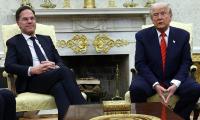What if trade between India and Pakistan was valued at $37 billion instead of $2 billion? This is not a guess but a prediction made in the World Bank’s latest report titled ‘A Glass Half Full: The Promise of Regional Trade in South Asia’. The report suggests that, given their geographical proximity and the size of their economies, India and Pakistan should be trading with each other – provided trade barriers are removed – at least 15 times more what they do at the current level.
The report has identified four critical barriers to bilateral trade between India and Pakistan. The first barrier to a suboptimal level of trade are the product restrictions in the form of long lists of ‘sensitive’ items on which no tariff concessions are granted by either country. Pakistan’s list has 936 items (almost 17.9 percent of tariff lines) and India has 614 items (almost 11.7 percent of tariff lines). In addition, Pakistan maintains a negative list comprising 1,209 items that cannot be imported from India because we haven’t accorded the ‘most favoured nation’ tariff status to India. These are border-tax distortions, which restrict the potential volume of trade.
The second barrier identified by the report is the excessive application of non-tariff measures (NTMs) that erode access to each other’s markets. NTMs are policy measures other than tariffs that are applied in all countries to protect health and safety standards, but become nontariff barriers if they are unduly burdensome. NTMs that hamper Pak-India trade, through the Attari-Wagah border, are usually excessive rules and regulations; laboratory tests resulting in lengthy inspection times;, non transparent administrative requirements; and transportation and labour costs that add to the transaction costs of doing business.
The report states: “Although geographical proximity should make for low transit costs and times between states and provinces of India and Pakistan, port restrictions offset this advantage”. The alternative land route by rail is in dire condition, with lack of warehouse facilities, no fixed train schedules, non-availability of wagons, and chances of pilferage.
The third factor impeding bilateral trade in goods and services is the stringent visa regime, which restricts the mobility of people between both countries and constrains bilateral trade in services such as tourism, education, medical and business services besides limiting foreign direct investment (FDI). The trust deficit between both countries is the fourth factor that has cast a shadow over normal trade relations.
After identifying the barriers to trade, the report suggests steps should be taken to enhance intra-regional trade in South Asia and implies that similar measures should be taken in terms of boosting Indo-Pak trade as well. But there are some key questions that the World Bank’s report seems to overlook.
To remove border-tax distortions, the report recommends eliminating a sensitive list within a time-bound framework and reducing tariffs with mutual consent. But how can we make the lacklustre South Asian Free Trade Agreement (Safta) effective and ensure that the commerce ministries of both countries are thriving, especially in light of the escalating political situation in both countries?
With respect to non-tariff barriers, the report suggests establishing bilateral institutional mechanisms for the flow of information and the transparency of procedures. But it fails to take into account the existence of bilateral mechanisms between India and Pakistan in the recent past that were stalled when the hostile Modi government assumed power.
The Customs Liaison Border Committee (CLBC), created in 2011, was an outcome of a trade dialogue on economic and commercial cooperation between the commerce secretaries of India and Pakistan that sought to reduce non-tariff barriers on Wagah border. The customs officials of both countries would meet alternately in Lahore and Amritsar to discuss operational issues and resolve them effectively.
As a result, some headway was made in easing the business process by way of harmonising customs procedures across the border; simplifying documents; lodging trade grievances; facilitating passengers; exchanging trade data and information; ensuring the expeditious clearance of cargo; and controlling contraband goods adding to transparency and reducing transaction costs. If this bilateral institutional mechanism is revived, there will be more avenues for meaningful progress in identifying bottlenecks to trade.
The report suggest that lessons should be drawn from the liberalisation of bilateral air services between India and Sri Lanka that operate around 147 flights per week between various cities and promote tourism. However, the report overlooks how confidence-building measures between Pakistan and India have been marred by deep-rooted security concerns and the diplomatic impasse that has thwarted serious efforts for trade in services.
The bilateral visa agreement signed between both countries in 2012 is still quite cumbersome and there will be no headway until it is relaxed. Visas are given on a single-entry basis for short durations, with specific cities and ports of entry and exit. Rejection rates are high, excessive documentation and lengthy timeframes are the norm, and there is a requirement for visitors to report to local police stations while moving from city to city, unless exempted.
Indian visa application facilities are available in many Pakistani cities whereas Pakistani consular services are only available in New Delhi. This adds to the difficulty of obtaining visas for those residing in other Indian cities. The Indian e-visa facility, introduced in November 2014 and currently available to 160 countries, woefully excludes Pakistani passport-holders and people of Pakistani origin from its eligibility list. Recently, Pakistan’s offer of visa-free direct access to Kartarpur Darbar Sahib Gurdwara didn’t receive a positive response from the Indian government. All these hurdles discourage trade and tourism.
To dispel the trust deficit, the World Bank report suggests following the Bangladesh-India border haats (informal markets across the border) –which aren’t too relevant in our case. The report doesn’t mention the need to address the Kashmir issue, cease unprovoked violations along the LoC, end blatant cross-border terrorism, and engage diplomatically at the Saarc forum and on a bilateral level.
These are legitimate concerns that the World Bank report doesn’t address. Without resolving these issues, a quantum leap in developing trade relations between India Pakistan seems like a distant reality.
The writer holds an LLM degree in international economic law from the University of Warwick.
Email: beelam_ramzan@yahoo.com
People of that time believed that an eclipse was a symbol of displeasure of gods
Vertically speaking, dominance of domestic debt in Pakistan’s debt portfolio is haunting
Loss of biodiversity is stark reminder that urban mismanagement is not just infrastructural failure but ecological...
Strong public warning systems can also help ensure quick evacuations in places prone to fires
PPPs in Pakistan's WASH sector face significant regulatory and policy challenges that hinder their effectiveness
Instead, it would have powerful chairman with three-year term, appointed at prime minister’s discretion







